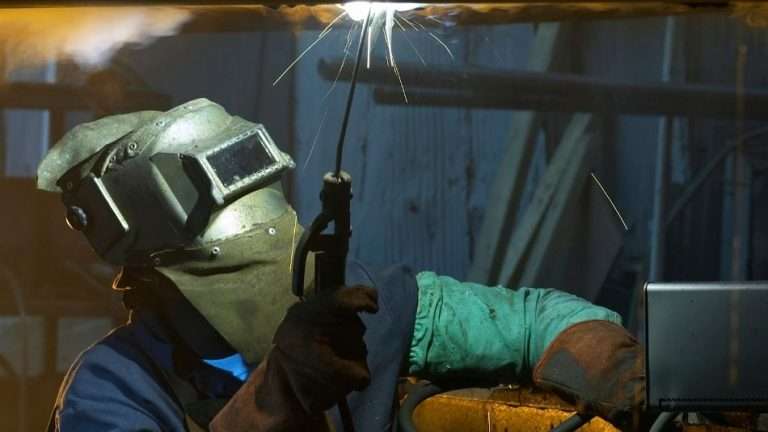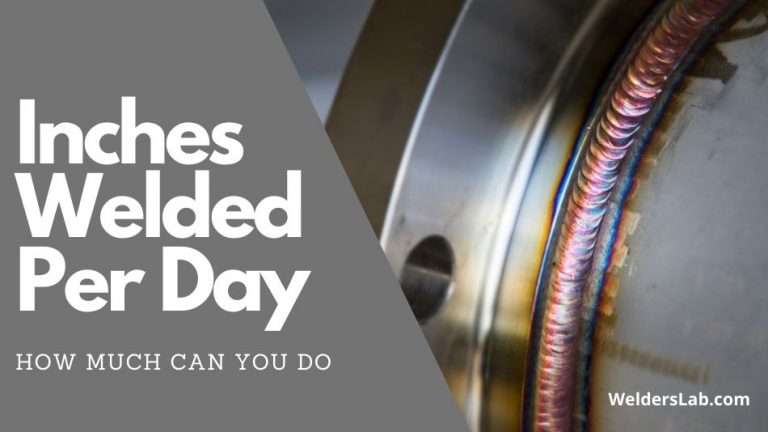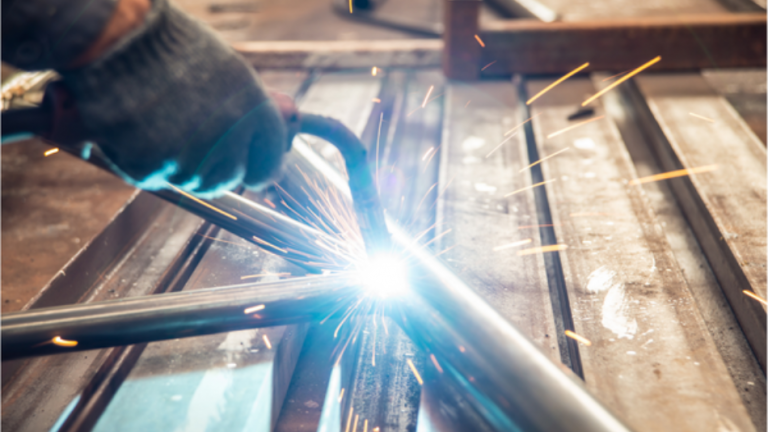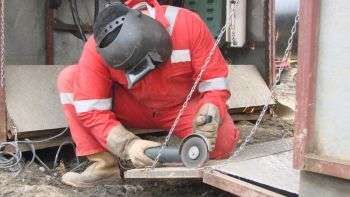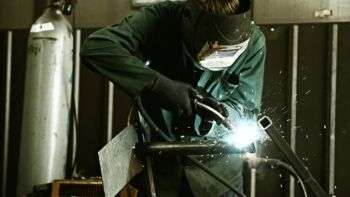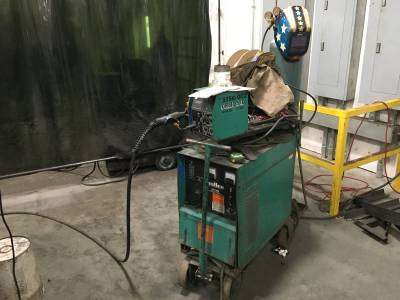What is the Easiest and Hardest Metals to Weld?
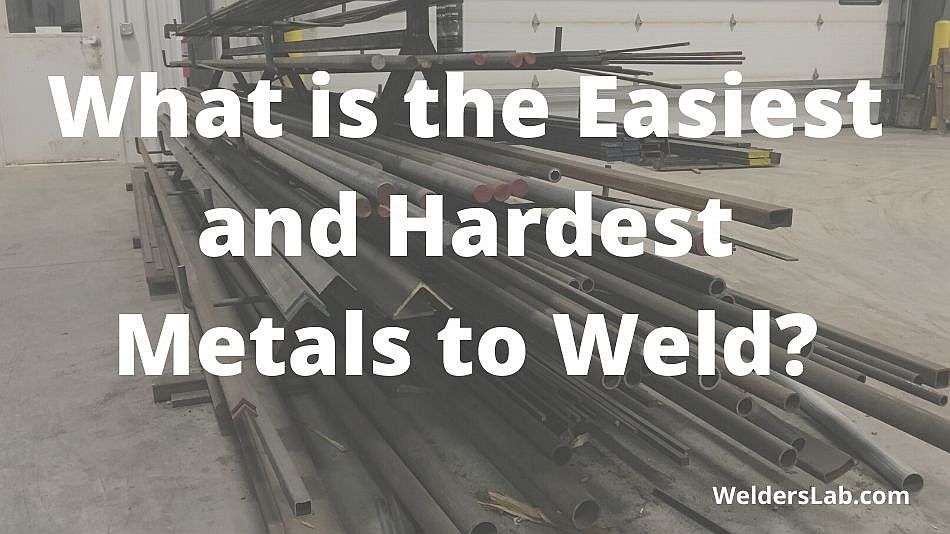
In the welding industry, you quickly learn that there are numerous types of metals. There are some metals I will never work with and some metals I work with all the time. The metal you work with might also vary based on the type of welding you are doing.
So what are the easiest and hardest metals to weld? Mild steel is by far the easiest metal to weld with. Keep in mind that the easy part specifically refers to mild steel and not all forms of steel fall into this category. Some of the harder metals to weld include aluminum, nickel, and titanium.
In this guide, we will break down multiple types of metal for you and provide a general overview of what you can expect while welding when you work with each particular medal that we cover. By the end of the guide, you should have a basic understanding of 10 types of metal.
Let’s get started!
What Is the Easiest and Hardest Metals to Weld – A Complete Guide
In this guide, we will cover 10 common types of metal that can be welded.
We will cover each one in detail, giving you an overview of what to expect when you work with said metal.
These are not necessarily shared in any specific order but we will be sure to touch on how easy or hard the metal is to work with.
Mild Steel
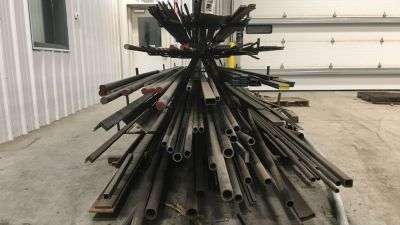
Skill Level: A36 mild steel is the most common and easiest type of metal to weld.
What is the easiest metal to weld? Without a doubt, that answer goes to mild steel hands down. Mild steel is made up primarily of steel or iron.
Mild steel is common for fabrication as well as MIG and TIG-style welding. It’s easily one of the most versatile and simple metals available when it comes to welding.
Mild steel has a low carbon content. Mild steel is easy to come by and incredibly easy to work with.
It has been worked in many ways for many years so many practices and processes have been developed and formed around mild steel, making it one of the easiest metals to weld.
Mild steel is also versatile. It’s easy to maneuver and bend to your will. It’s less likely to crack or break or be unwieldy to your demands.
Additionally, mild steel requires the least amount of PPE when you’re working. For example, you can get away with welding mild steel with no respirator.
Aluminum
Skill Level: Aluminum of the hardest metals to weld because of its properties and the type of equipment you may need to weld it.
What are the hardest metals to weld? It might seem surprising but aluminum is actually quite challenging for welders.
When you picture aluminum, you probably think pliable and easily manipulated but it is actually one of the most difficult welding metals there are.
The biggest reason aluminum can be so challenging is that there is a lot that needs to be understood about the properties of aluminum.
For instance, it’s a very soft metal and you might need special welding tools to have any success. Tools like a push-pull gun and a special welding liner come to mind.
MIG welding is one of the most common welding types for aluminum. It actually works best because of the heat required for various aluminum options.
Exercise caution with aluminum because it is incredibly sensitive. Aluminum is also one of the most hazardous types of metals to weld with. You should always wear a respirator for your protection.
Stainless Steel
Skill Level: 304-grade stainless tends to weld fairly easily but has a tendency to wrap if it gets too hot.
Stainless steel tends to fall somewhere in the middle between easy and hard. The thing is there are so many variations of stainless steel that welding difficulty could easily vary.
If you’re working with something like 304-grade stainless steel, it’s not too bad. It’s pretty easy to work with if you use a MIG welder.
Overheating stainless steel can lead to warping and cracking if you’re not careful.
While stainless steel isn’t necessarily hard to work with, you have to pay attention to what you’re doing so you don’t make mistakes.
Stainless steel isn’t so bad to weld if you just be sure you’re using the proper technique and that you understand the metal.
Don’t just weld blindly but take the time to get to know your materials. The grade of stainless steel can make a significant difference in how easy or hard the welding might be.
Cast Iron
Skill Level: Cast Iron tends to be a very hard metal to weld and may require you to heat the metal up prior to welding. Stick welding tends to be the best option to weld stainless.
Cast iron is a hefty metal. Unfortunately, while it is strong and sturdy in appearance, it’s actually very brittle when it comes to welding practices.
Side Note: You HAVE to heat cast iron well before you can start any type of welding process.
When you’re welding cast iron, a stick welder is the best way to go. Cast iron certainly falls into a difficult category because it can be so brittle to work with.
Cast iron is something that tends to need repairs quite a bit because of its brittle nature.
At the same time, repairs on cast iron aren’t so bad if you be sure to heat the metal before you begin welding.
You have to be careful not to heat or cool too quickly during the process in order to avoid potential cracking later on.
Galvanized Metal
Skill Level: Not a hard metal to weld but the gas it produces from the zinc coating can be very dangerous and harmful.
Galvanized metal poses many problems with welding. Galvanized metal is perhaps one of the more challenging metals to weld.
Not only can the welding itself be a challenge but there are also a lot of health risks involved so be sure to wear proper PPE if you are working with this metal.
Galvanized steel is typically coated with a layer of zinc. The zinc is used to reinforce the metal and make it resistant to corrosion. Subsequently, the zinc makes the welding job rather challenging.
The challenge you run into when welding galvanized metal is that the zinc might actually negatively affect your weld job without you really knowing it.
You’re more likely to end a job with hidden inclusion or porous areas that you can’t really see or notice right away.
The zinc coating also makes welding more challenging because it’s much harder to actually penetrate the metal surface, which is perhaps what leads to the potential hidden issues.
MIG is one of the best ways to weld galvanized metals.
Brass
Skill Level: Brass can be harder to weld depending on the type you’re welding.
Brass is another challenging metal to weld because it varies so much. Brass comes from zinc and copper but zinc and copper are not treated the same in the welding industry.
This makes it harder to know what melting point you are going to be working with when you weld brass.
You need to determine what your brass is finished or coated in so you can accurately determine your heat needs.
Brass is a fairly broad term so I recommend that you take a closer look at just exactly what brass you are working with.
A zinc coating requires less heat than copper. Ideally, you should be able to weld brass with soldering, MIG, or TIG welding tools.
Bronze
Skill Level: Bronze is a harder metal to weld and requires a hotter weld.
When you weld bronze, you should use bronze rods. You might hear bronze welding also referred to as braze welding.
It’s not quite the same as brazing but it’s a similar process. When bronze is slightly heated, the metals meld easily.
That being said, welding bronze is actually very challenging. It takes a lot of continuous heat to achieve welding with this metal. If you’re not careful, you can overload your machines.
If you’re going to weld bronze, I recommend that you stick to gas metal arc welding or MIG welding for the best results due to the high heat needed for extended lengths of time.
Copper
Skill Level: Not an easy metal to weld and is typically done by soldering or brazing.
Copper is best when welded through arc welding. You can use manual metal arcing, MIG, or gas metal arc processes.
Welding copper is not always an appropriate solution. Sometimes soldering or brazing the metal is a better choice.
Copper isn’t necessarily difficult if you have the right equipment but you do need to be familiar with the metal and be able to discern when soldering might be a better option.
Nickel
Skill Level: Welds are easy and similar to stainless steel.
When welding nickel, you can use arc welding, MIG, or TIG for a good weld. Nickel welds quite similarly to stainless steel.
Nickel is another broad category so the key is understanding your metal.
The challenge to welding nickel is that it doesn’t harden from heating and then quenching.
Your weld will not turn hard and brittle but this makes it more susceptible to porous surfaces that won’t hold up over time.
Titanium
Skill Level: Can be harder to weld.
You will hear titanium described as a hard metal to weld but if you just understand your tools and metals, it’s really not so bad.
Titanium is common in aerospace and similar industries. For titanium, you most likely will weld with TIG or gas metal arc welding.
Be sure to use a titanium filler rod. It’s not so hard but the metal is very reactive so be prepared and work quickly and efficiently.
Conclusion
The primary thing to remember is that you can weld with any type of metal. However, you should educate yourself on the various metals and the best practices for each one.
Which kinds of different metals have you welded with and what was the hardest thing you’ve ever welded? Inquiring minds want to know!

